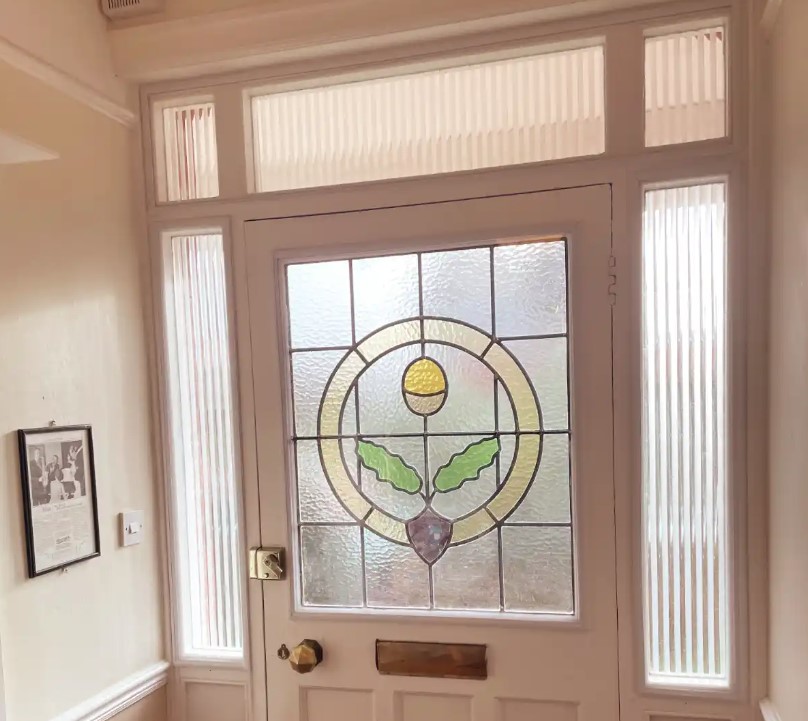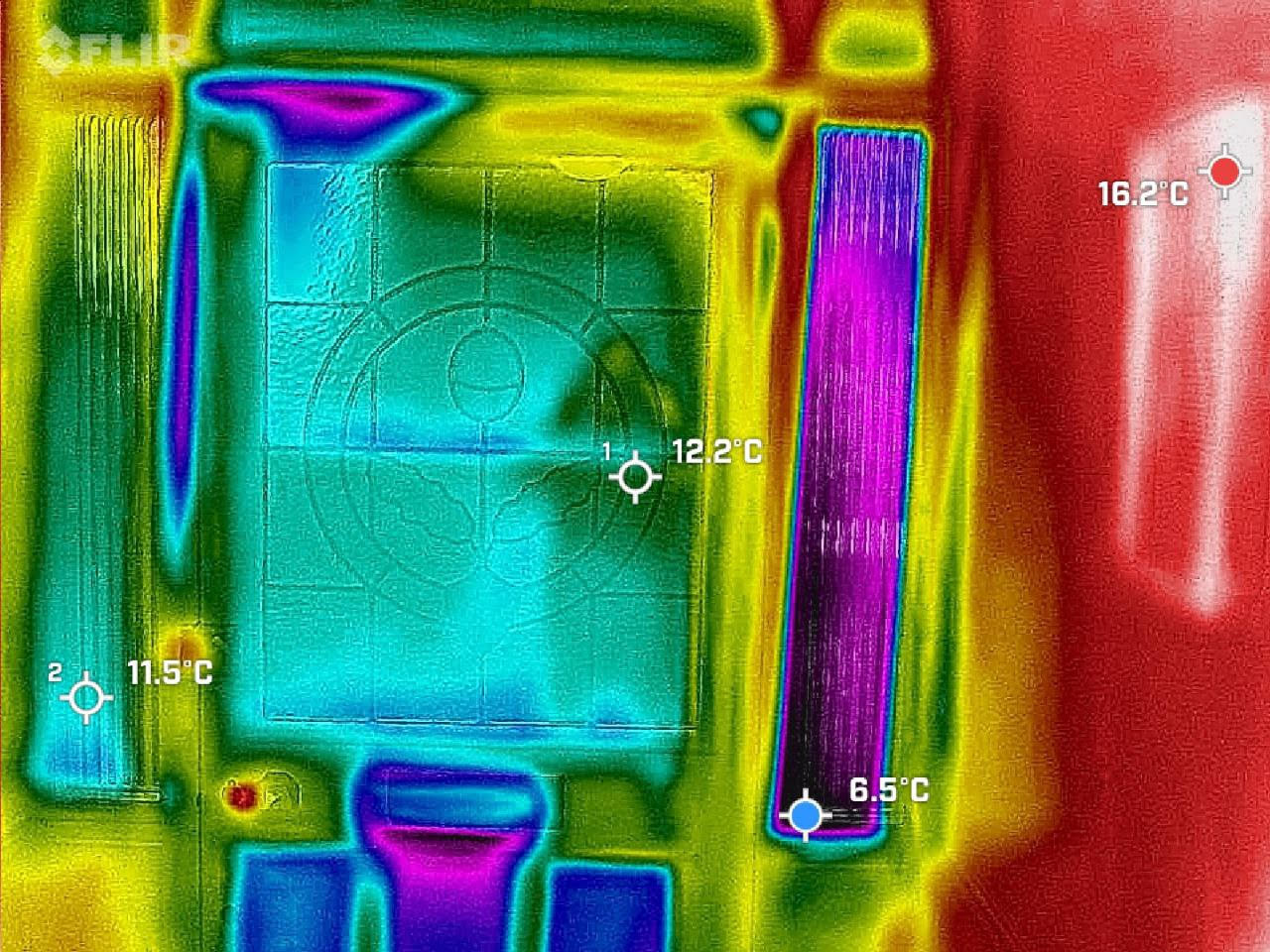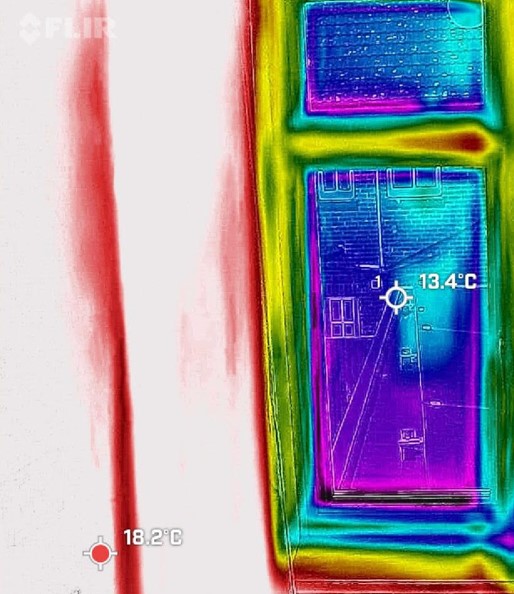Thermal Image comparisons between glazing insulation options
The Thermal Imaging Camera Never Lies…
Customer feedback is very important. It is motivating to get heaps of 5 star reviews, but extra comments, ideas and suggestions are also useful, as they may help us to improve both products and website, where needed. Most gratifying of all is when something we’ve not thought of comes up, or when a customer uses our products and tests them in an environment we can’t recreate ourselves. Whatever we can learn can be digested and then passed on to others.
Retrofit Southampton took the feedback process to a different level. Back in late 2022, this community self-help group were set up, to advise local residents on energy saving measures great and small. They recognised that in a neighbourhood consisting of mainly older housing, sharing advice on adapting these properties to be warmer, use less energy and be more comfortable would be valuable to local residents.
Their case study that interested us most was the insulation of a front door and surround which incorporated single glazed panels of stained and decorative glass. Our Superglaze system was chosen to insulate this, along with 4mm solid Polycarbonate sheet on the door itself, and 3mm on the narrower side panels. Pete, the householder, who also set up the Retrofit Southampton website, later took thermal images of not just the front door, but for comparison, a uPVC double glazed window in another room. These are the results:

Front door and entrance fitted with Superglaze Secondary Glazing
This photo shows the front door with Superglaze panels over the door and surrounding windows. The White Superglaze system is screwed to the frames around the windows and a cover strip is then fitted in order to hide the screws, so the panels blend in nicely.
Apart from being very discreet, the panels add a layer of security to the front door. The Polycarbonate sheet is virtually unbreakable, the edgings are screwed in place so preventing access to the latch via the glass. The Superglaze can also be fitted externally to help prevent the glass being smashed.
To view more images of Superglaze and the full range of Easyfix Secondary Glazing systems please visit our Customer Gallery.
For the thermal comparison, the secondary panel on the right of the door was removed before the experiment, to best illustrate the contrast in heat retention.
Keen to keep the look and feel of the original doorway, discreet Secondary Glazing was preferred over full Double Glazing replacements.

Thermal comparison with and without Secondary Glazing
The colours show the door on a cold evening, and the surface temperatures in different places.
The thermal imaging uses the rainbow spectrum to show heat differences, with red being warmest and violet coldest. Here we see that the wall temperature away from the door is 16.2 C, the 4mm thick door panel limits loss to 12.2 C despite the size of the glass outer pane; the 3mm panel at the side shows 11.5 C but the uncovered glass is right down at 6.5 C.
Interestingly, the image also shows cold spots around the upper part of the door, the letterbox and on the thinner decorative wooden door panels.
In order to improve on the cold areas around the doorframe and letterbox it is worth considering our range of Easyfix Draught Excluders
Keen to keep the aesthetic of original door it is being considered whether to fit the Superglaze system and clear glazing sheet over the three panels in the lower section of the door to improve the heat retention in this area.
Thermal performance of Double Glazing for comparison
Measurements were also taken in an adjacent room around the same time, where the original windows had been replaced back in the 90’s with standard uPVC double glazed units. This yielded the thermal image shown to the right.
Here the wall temperature is at 18.2 C, with the double glazed unit reading 13.4 C. This is slightly higher than the reading from the 4mm secondary panel on the front door, but the difference between it and the room temperature is 0.8 degrees wider than in the hall.
Conclusions?
Given the cold spots around and through the front door, including one uncovered glass panel, it is not surprising that the ambient temperature in the vicinity is lower than the separate room. However, in this cooler environment, the main secondary panel seems to be performing well, and holds comparison with the double glazed units in mitigating heat loss.

For this particular project, there were a number of positive outcomes from using Secondary Glazing:
– Secondary Glazing performed well on a challenging door and surround where double glazing would be difficult to fit
– The system chosen was significantly cheaper than any double glazed option could have been. This is important from the point of view of payback, where lower outlay that is relatively quickly paid off is most beneficial
– Using Secondary Glazing enabled the existing original decorative features to be left intact. This maintains the character of the property from both inside and out
Many thanks to Pete at Retrofit Southampton for allowing us to use his images. For further (and interesting) reading, visit their website that examines insulation and energy saving measures beyond Secondary Glazing.

